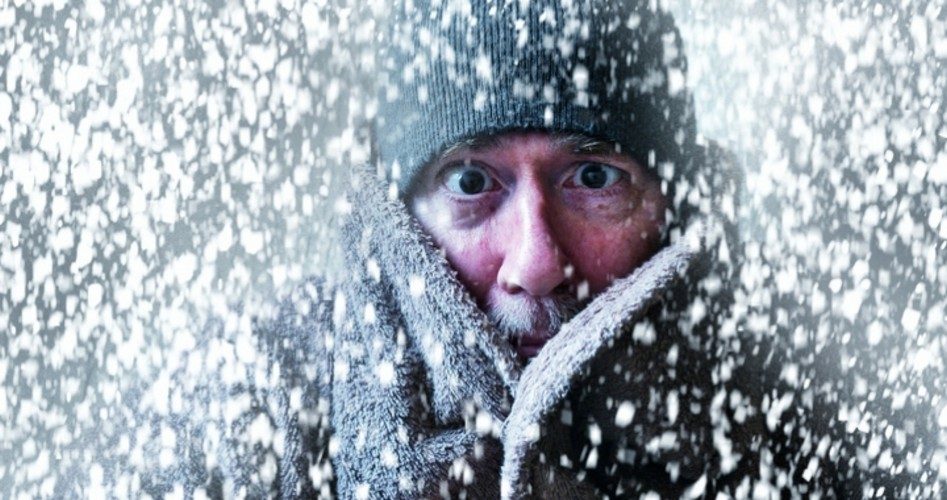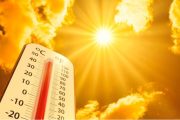
Even the New York Times, one of the biggest sources of fake news on anthropogenic (human-caused) global warming, or AGW, occasionally gets facts straight and the story right. Or, at least, partially straight and mostly right. Such is the case with the Times’ recent stories by Jane E. Brody on December 19 and December 26 regarding the death toll risks from cold weather versus hot weather. In her December 19 column, titled, “Beware: Winter Is Coming,” Ms. Brody cited an important study from The Lancet, the British medical journal, that found “Cold kills” as she put it — and at a rate 17 times that of hot weather.
The Lancet study was the result of a mammoth project involving over 20 researchers from many different countries analyzing data from 384 locations in Australia, Brazil, Canada, China, Italy, Japan, South Korea, Spain, Sweden, Taiwan, Thailand, UK, and the USA. They analyzed over 74 million deaths in various periods between 1985 and 2012.
“While casualties resulting from heat waves receive wide publicity, deaths from bouts of extreme cold rarely do, and those resulting from ordinary winter weather warrant virtually no attention,” Brody reports. “Yet an international study covering 384 locations in 13 countries, including the United States, found that cold weather is responsible, directly or indirectly, for 17 times more deaths than hot weather.”
“In winter in the United States, mortality is generally 10 percent to 15 percent higher than on typical summer days,” the Times reporter notes.
“How, you may wonder, does cold exact its deadly toll?,” Brody asks, and then answers. “About half of cold-related deaths result from blood clots that cause heart attacks and strokes, the British researchers reported. Blood becomes more concentrated during exposure to cold because blood flow to the skin is reduced to conserve body heat. This results in an excess of blood in the central parts of the body.”
The Times article continues:
To counter the excess volume, salt and water move from the blood into the tissue spaces, leaving behind “increased levels of red cells, white cells, platelets and fibrinogen” — thickened blood that is more likely to clot. Blood pressure, an important risk factor for heart attacks and strokes, also tends to rise with exposure to cold.
During cold weather, people typically spend more time indoors and congregate in smaller spaces. This helps to spread respiratory infections like cold, flu and pneumonia that can take a heavy toll among people with underlying chronic ailments like heart disease, chronic obstructive pulmonary disease, diabetes, asthma and even cancer and dementia.
The fact that cold weather is much more deadly to humans (as well as plants and animals) than hot weather is not really news; The New American has reported on the extensive research proving this truth a number of times over the past several years: Forget Global Warming; COLD Kills; Heat or Cold: Which Is More Deadly?; Hundreds Die in Cold Waves — Media Keep Flogging Global Warming.
Brody’s Times article, however, implicitly accepts that global warming is continuing. She writes: “Over time, milder winter temperatures are likely to result in fewer cold-related deaths, a benefit that could outweigh a smaller rise in heat-caused mortality.”
Warmer, milder winters would indeed be a good thing (fewer weather-related deaths, longer growing seasons, increased agricultural yields), but we have no assurance that this will happen, despite the non-stop AGW alarms claiming that our planet is in dire danger of total meltdown. In fact, now even many of the most prominent alarmists admit there has been no measurable global temperature rise over the past two decades — during the very period they have been crying “WOLF!!” in ever louder and more urgent tones. The failure of global temperatures to rise as predicted by the alarmists is variously and euphemistically referred to in the scientific literature as a “hiatus,” “pause,” “lull,” or “standstill.”
Even The Economist, the influential British journal that has rivaled the New York Times for hysterical global-warming propaganda, has been forced to acknowledge the embarrassing truth of the hiatus. We reported on this in January 2016, noting:
In a June 2013 article on the hiatus, “The Cooling Consensus,” The Economist conceded, “There’s no way around the fact that this reprieve for the planet is bad news for proponents of policies, such as carbon taxes and emissions treaties, meant to slow warming by moderating the release of greenhouse gases.” The reality is “that the already meagre prospects of these policies … will be devastated if temperatures do fall outside the lower bound of the projections that environmentalists have used to create a panicked sense of emergency.” They “will become harder, if not impossible, to sell to the public, which will feel, not unreasonably, that the scientific and media establishment has cried wolf.” As indeed they have.
But the hardcore alarmists keep insisting that the warming will pick up again, as soon as we collectively breathe (or burn) “X” number of molecules of CO2 into the atmosphere. Therefore, they say, we must implement the United Nations’ Paris Climate Agreement for global regulation and regimentation of human society, along with its multi-trillion dollar tax-and-transfer schemes (see here, here, and here).
However, aside from the dangerous lunacy of the UN’s outlandish demands, there is a growing consensus among scientists that rather than planetary warming we may be facing imminent global cooling — with all of its attendant dangers — as our sun enters into a “solar minimum.” And, as many prominent scientists and published scientific papers have pointed out, much, if not most, of the recorded slight temperature rise of the past century that the alarmists attribute to human activity, is actually the result of natural causes (primarily solar activity), as our planet has emerged from the Little Ice Age. (See here, here, here, and here.)
What’s more, not only have we been experiencing a hiatus in the gradual temperature rise since the Little Ice Age, but many scientists believe that as our sun moves into the new solar minimum, we will likely be facing more severe, colder winters. (See here for excellent (and amazingly fair) interviews with notable experts by the AGW alarmist BBC, as well as here, here, here, and here.)
Regardless which scenario turns out to be correct, whether global warming or global cooling, we can know for sure that those societies that are more highly developed and have access to plentiful energy — especially hydro-carbon fuels such as coal and oil — will be more resilient and better able to cope with the challenges of extreme weather, as well as natural disasters such as earthquakes.
Dr. Indur Goklany, who represented the United States on the UN’s Intergovernmental Panel on Climate Change (IPCC) and helped produce the IPCC’s First Assessment Report, notes in his study, “Humanity Unbound: How Fossil Fuels Saved Humanity from Nature and Nature from Humanity,” that the noisy AGW lobby’s anti-CO2/anti-fossil fuel jihad threatens to leave a huge swath of humanity’s poorest of the poor at the mercy of Nature. Ironically, the anti-carbon propaganda campaign also threatens Nature itself. Dr. Goklany points out: “Nothing can be made, transported, or used without energy, and fossil fuels provide 80 percent of mankind’s energy and 60 percent of its food and clothing. Thus, absent fossil fuels, global cropland would have to increase by 150 percent to meet current food demand, but conversion of habitat to cropland is already the greatest threat to biodiversity. By lowering humanity’s reliance on living nature, fossil fuels not only saved humanity from nature’s whims, but nature from humanity’s demands.”
Related articles:
Fake News of Polar Bears Dying From Global Warming Exposed — Again
Biggest Fake News Story: Global Warming and Phony Consensus
Just Freeze! EPA Says Burning Wood Is Bad, but so Is Natural Gas, Coal, Oil
Forget Global Warming; COLD Kills
Valentine’s Day Was an (Arctic) Blast, With the Ghost of Global-warming Past



